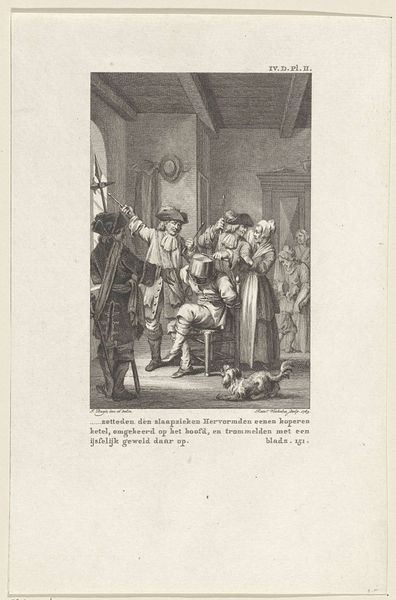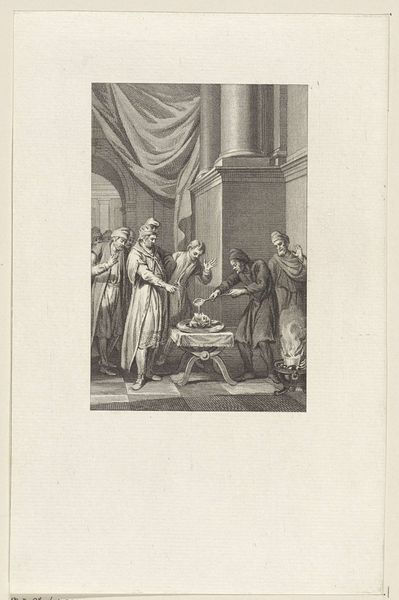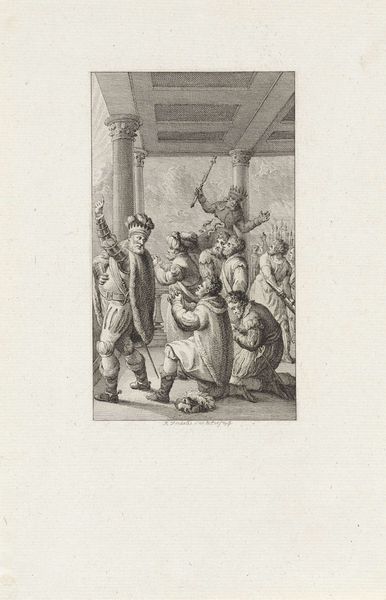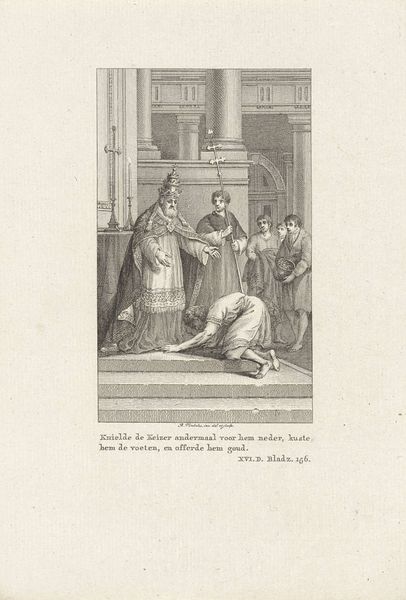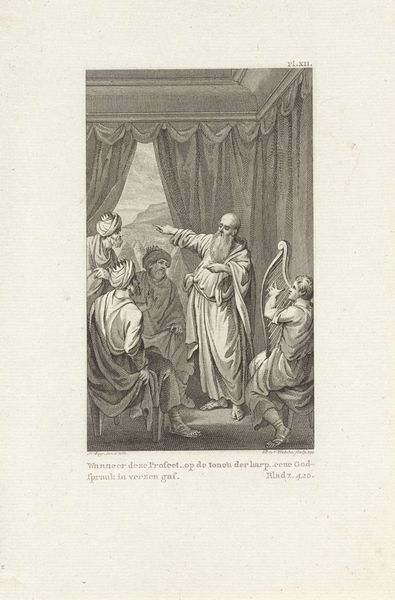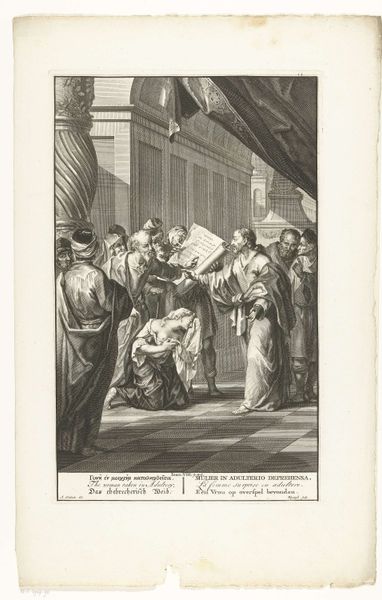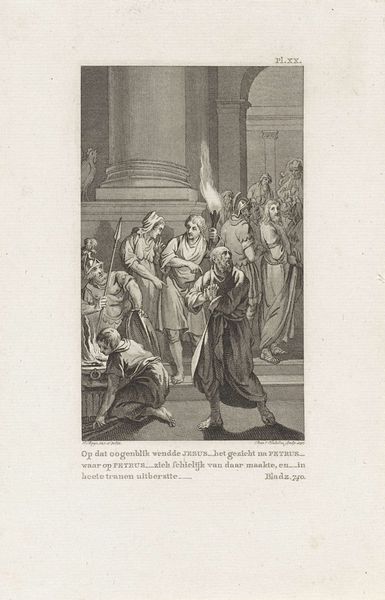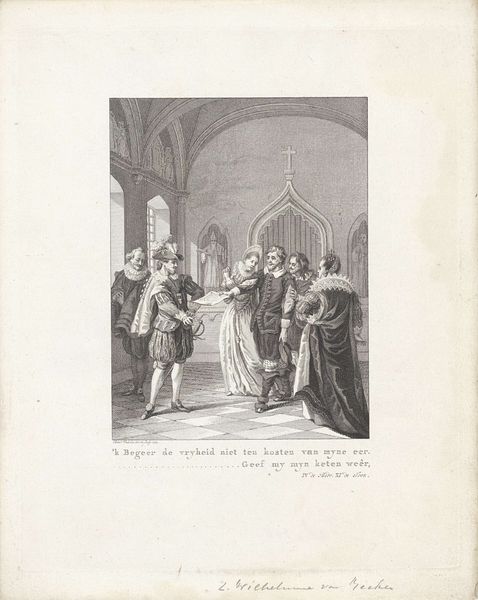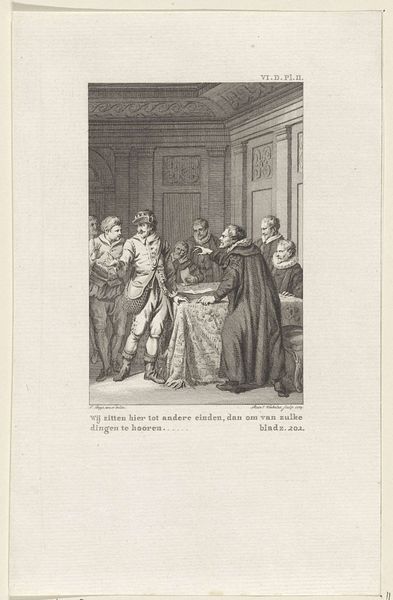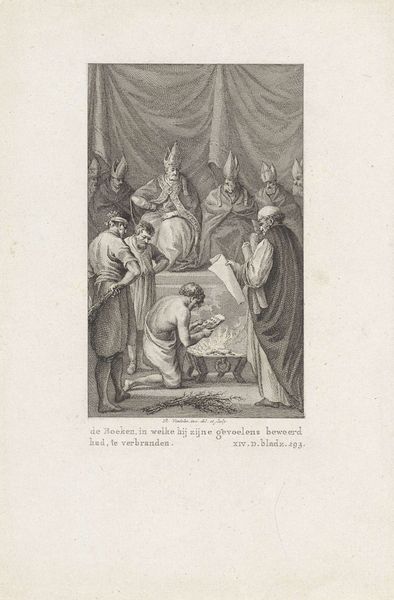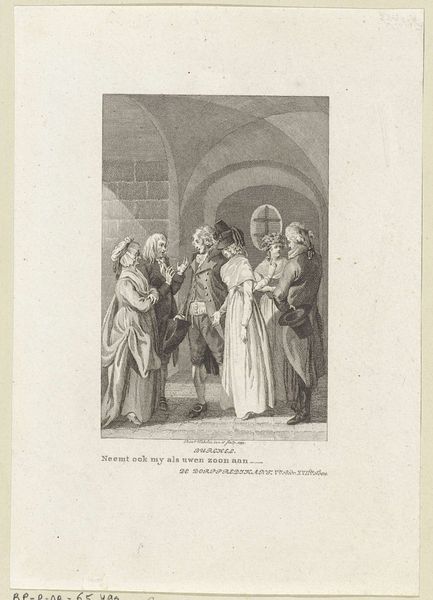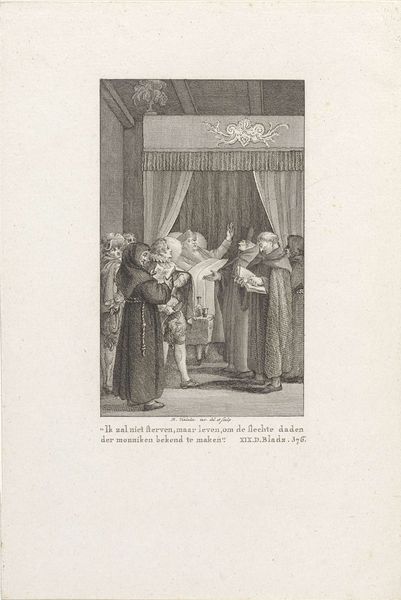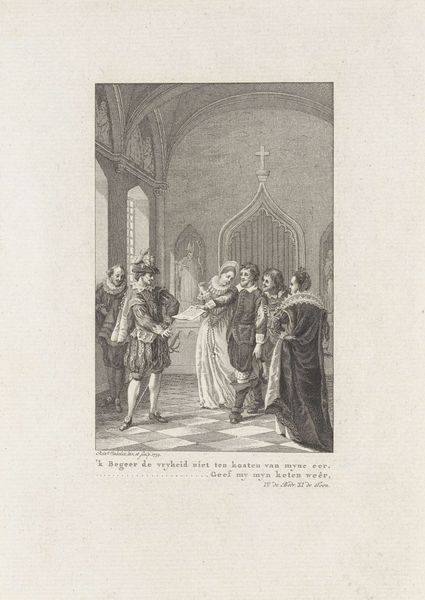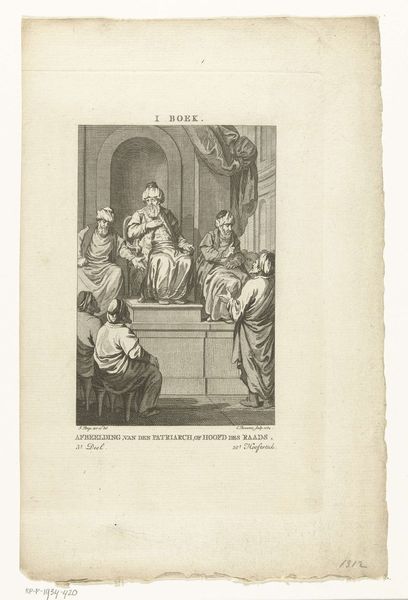
Dimensions: height 209 mm, width 150 mm
Copyright: Rijks Museum: Open Domain
Curator: Here at the Rijksmuseum, we have "Twee mannen knielen voor een bisschop," or "Two Men Kneeling Before a Bishop," an engraving rendered in 1775 by Reinier Vinkeles. The piece certainly grabs your attention with its precise lines and composition. What are your immediate thoughts? Editor: My initial impression is of intense humility, perhaps even subservience. The way the two figures are positioned—literally at the feet of the bishop—creates a clear visual hierarchy, but the linear precision makes it rigid. Curator: The crispness of the line work undeniably guides our eye to certain focal points. Note the expert use of line in the bishop's robes; the fabric cascades and folds with tremendous naturalism, framing him as the pivotal figure. Editor: Absolutely, the way light and shadow are articulated serves to emphasize the bishop's centrality but I'm immediately curious about what event this is meant to depict. Curator: It seems we are witness to a symbolic or formalized offering of some kind. Consider the sword and scabbard laid at the Bishop’s feet and held between the kneeling men. It implies a moment of surrendering worldly power to religious authority. Editor: A very charged image for the time. This makes me wonder about the historical reception of this print. How would the public at the time have interpreted such a clear display of religious submission, and what function did Vinkeles' style play in influencing public opinion? Curator: The baroque influence is evident, from the heightened sense of drama to the elaborate detailing within the print, and its style would likely convey authority to some while alienating others. Editor: Indeed, its visual statement on power—religious versus secular, the politics of that period—can certainly offer valuable insight to audiences viewing the artwork now, even without knowledge of the particular figures. It reveals societal tensions, but the artistic execution keeps it somewhat formal, almost theatrical. Curator: Looking at how Vinkeles used lines to define volume and convey meaning reminds me of how much the artistic language carries within. I found this to be another helpful study in visual hierarchy. Editor: I’m taking away a better understanding of how historical narratives gain and lose influence and seeing it reflected in the engraving's careful lines, which help us reconstruct an image of this era.
Comments
No comments
Be the first to comment and join the conversation on the ultimate creative platform.
